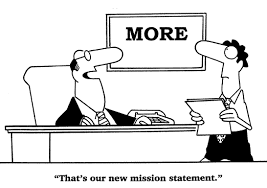 I used to take pride in the word “productive.” It used to mean satisfaction of a job well done, or a sense of accomplishment. “I had a productive day” meant I was able to accomplish everything on my “to do” list and feel good about it. I had set goals for myself, whether at work or at home, and I achieved them. What a great feeling!
I used to take pride in the word “productive.” It used to mean satisfaction of a job well done, or a sense of accomplishment. “I had a productive day” meant I was able to accomplish everything on my “to do” list and feel good about it. I had set goals for myself, whether at work or at home, and I achieved them. What a great feeling!
Then, somehow, somewhere along the line, the meaning of the word changed. Bigtime.
“Productivity” is the new buzzword in the long term care setting, particularly among physical, occupational and speech therapists. It may mean something different to each of us, depending on our role..therapist..manager..administrator. It is a word that can make some seasoned clinicians feel great, while making others feel totally inadequate and make others just plain mad. Productivity has become the term, or standard, by which employers measure our worth, or at least, our worth to the organization.
Maybe the word is just misunderstood?
Just for fun, let’s look at Merian Webster’s definition of productivity.
 pro·duc·tiv·i·ty
pro·duc·tiv·i·ty
- the rate at which goods are produced or work is completed
- the rate per unit area or per unit volume at which biomass consumable as food by other organisms is made by producers
- measure of productive efficiency calculated as the ratio of what is produced to what is required to produce it
- having the quality or power of producing especially in abundance
- effective in bringing about
- yielding results, benefits, or profits
- yielding or devoted to the satisfaction of wants or the creation of utilities
- producing or able to produce something especially in large amounts
- advances in productivity stemmed from a number of innovations, including assembly lines and automation
- raising mucus or sputum from the bronchi <a productive cough>
Really? I don’t see myself as a mass producer or associated with an assembly line in any way, shape or form. Speaking as a therapist myself, I’m going to go out on a limb and say that the word “productivity” is not a favorite of therapists working in long term care today. Not with that definition! Therapists are of the mindset that they are professionals…professionals whose main function is to set targets and goals for their patients and provide the appropriate treatment to each patient so those goals can be achieved. Therapists know goals! We are all about goals! And then, we have our manager or employer impart a different set of goals…productivity goals…goals of how many “minutes” of our workday we will be productive…or billable…and…these goals and standards will be used to measure our abilities as clinicians??
Does Volume = Ability? No. Volume=Profit. {Well, that’s the idea, anyway}
Yes, we are ALL {nurses, aides, maintenance, housekeepers} accountable for the “bottom line” and need to be fiscally responsible. And yes, there needs to be a standard by which to measure if {ALL}, including therapists, are “performing” up to par, pulling their share, producing appropriate outcomes. That is well understood. However, many are equating productivity with performance…and they are 2 VERY different words!
Since therapy is a revenue producing center in the long term care setting, productivity is tied to financial outcomes, as it typically only measures the amount of time spent in a workday providing “billable” activity. For example, if you work an 8 hour work day and have a half hour of non-paid lunch, you technically have 450 minutes of your workday to “produce” billables. Any time spent of that 450 minutes that is not being billed out to a patient is considered non-productive time. If, of that 450 minutes, you provide 7 treatments at 60 minutes each, you were 93% productive.
8 hours = 480 minutes | 480-30=450 minutes | Productivity= 420/450 = 93%
So in your 7 1/2 hour day, not including lunch, you had 30 minutes available to write stellar documentation to justify the services you just provided, transport patients, talk to nurses/family/caregivers, supervise support personnel… and go to the bathroom. Sounds about right? I’m sure many of you chuckled when you read “30 minute lunch.” Most therapists I see today don’t take a lunch at all…or they do their documentation through lunch time, just to keep up. {Look at all the crumbs in their keyboard.} Believe it or not, some therapists are so bound by productivity standards and the consequences of poor productivity, they will even punch out at the end of the day and stay to finish notes, just to be “productive.” Really? Work for free? We won’t even mention that to the Labor Board!
Therapists exist for their patients. Therapists want to do the right thing… for their patients AND their employer. Therapists want their facility to succeed..knowing that in the end this trickles down to helping their patients. That’s how therapists are wired. Therapists are not slackers. Any other professionals out there willing to work for free?? (That’s what punching out and coming back to finish your work just to have good productivity is…) Maybe there are some other workers out there who do the same? Maybe a worker punching out and coming back to work on the assembly line for free just to hit daily productivity targets?
Maybe we need a new word? How about “efficient,” defined by Webster as “well-advanced or competent in any art, science or subject; skilled.” Isn’t that what we are really looking for–SKILL. Not mass production. If someone is skilled at their job, won’t they be… productive?
Well, I don’t think one blog post is going to change the industry and I have a feeling we are stuck with the word “productivity” and how it is currently measured for a while. (At least until MEDPAC’s recommendations to change the reimbursement structure for therapy in long term care are implemented…oh yes, change is coming!) So here are some points to think about and things you can do in the meantime:
- Know how productivity is calculated (Most therapists these days are required to calculate their own on a daily basis and hand it in with a time sheet)
- Know the difference between billable productivity and total productivity. Most employers use billable. I’m a fan of total productivity. It is much more realistic and includes all of your billable and non billable time in a day, which should be close to 100%. It accounts for all of your billable time, adds documentation time, time for screens, care conference, discharge planning meetings, etc. If your billable productivity is low and you feel that is not an accurate reflection of your day, ask for help. You may need some guidance as to what and how to bill for your services. If your total productivity is low, then you MAY have performance issues, which should be dealt with. Calculate your total productivity and keep it as a record.
- Know what an appropriate productivity standard is for your discipline, job title and setting AND know your productivity.Total productivity for all should be above 90%, which means 10% of your work day you were doing “nothing” work related. We should be devoting our work day to work– so it is expected these totals should be higher.Billable productivity is going to vary based on your position. Assistants should be able to bill more daily as they are not bogged down with the documentation of evaluations and progress reports and discharge summaries. Therapsits should be a little lower. Therapists designated to answer consults or perform screens, etc. should have a lower billable expectation. However, the work that these therapists do can be invaluable, as this “non productive” work is typically how new residents in need of therapy services are identified. These therapists will have a high total productivity. Billable productivity can range from 50%-90% based on your role. It should NEVER be 100%. How can it?
- Know what the push behind productivity expectations are. Know who the push is coming from and why. Some companies make more profit when productivity targets are hit, and some managers are compensated for keeping their staff above a certain percentage. Does your manager, or your managers boss get compensated for high departmental productivity?
- Look at your daily assignment with a clinician’s mindset, not an assembly worker’s mindset. Clinicians provide treatments, not minutes. Clinicians provide what is clinically indicated, not what is required to hit a payment category.
- Know that accurate billing trumps great productivity. You can’t go to jail for being non-productive.
- Remember, anyone can SEE a high # of patients in a day, but a clinician can only TREAT a limited # of patients in a day. Seeing and treating are very different.
- Know your worth. Your productivity score does not equal your worth. Be able to speak to how you contribute to your facility in other measurable terms.
- True productivity is all about balancing quality and quantity. Who cares if you can produce 500 widgets per day if they all break when you use them?
- Be leery of facilities and companies with the mission statement in this cartoon. Promises of 100% billable productivity or a mid-high 90% are empty. Though that level of productivity may be delivered, it is a guarantee that something else had to “give” in order to get it. For example, therapists may not have had enough time to provide adequate documentation to support the treatment, so even though the productivity goal was hit on the front end, an audit may deem those services were not medically necessary or lacked supporting documentation, and the payment made for those services will then we recouped on the back end….which may be long after that productive therapist or productive therapy company is gone, causing the facility to incur the penalty.

Productivity has been a hot topic among our professional associations, APTA, AOTA, ASHA, as many therapists have expressed concern over the recent push for productivity from employers and contract therapy companies. The associations are working together to provide therapists with the information and support needed to address this issue. See the “Consensus Statement on Clinical Judgement in Health Care Settings.” View link here.
Keep yourself involved in the discussion. It will be around a while. The PPS (Medicare Part A) payment structure is on the verge of change. There will soon be a shift from productivity to performance outcomes, particularly when it comes to calculating how facilities are paid for Rehab RUGS. MEDPAC has proposed other alternative payment systems that are NOT based on the TOTAL number of MINUTES provided.
Maybe then, to therapists, the word {productivity} will go back to its original meaning: Webster’s #10 above, coughing up sputum!
In Your Corner,
Dolores
Dolores Montero, PT, DPT, GCS, RAC-CT
SNF Rehab & MDS Compliance Consulting
www.MonteroTherapyServices.com


3 Comments